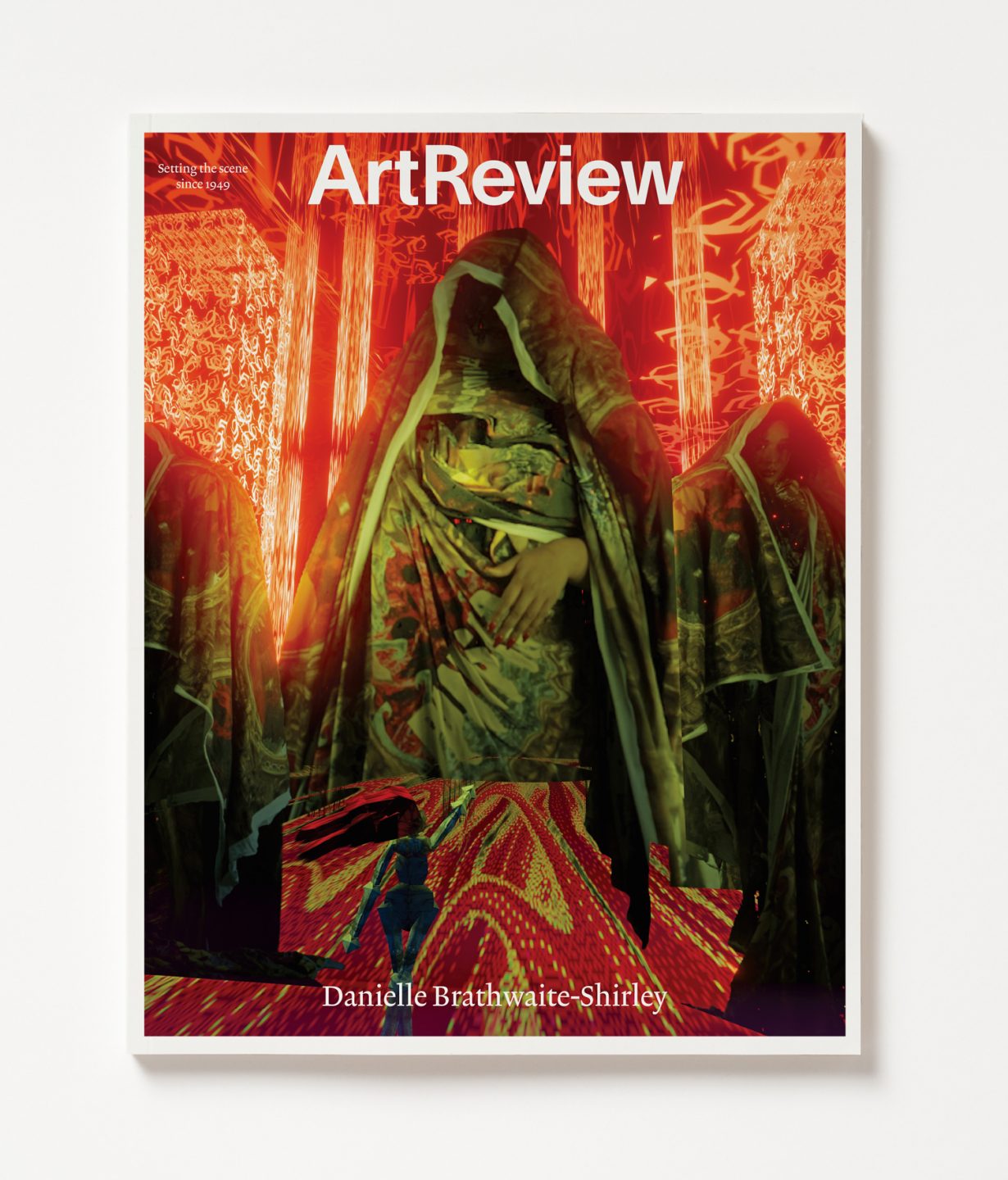Featuring Danielle Brathwaite-Shirley, Gaming in the artworld, N.Dash, Naama Tsabar, Yto Barrada, Shanghai Biennale, and much more

***Subscribe now or get your copy from our new online shop***
Recently, ArtReview has been playing a lot of videogames. Dungeon Keeper, Resident Evil, Grand Theft Auto, Legend of Zelda. You name it, ArtReview has played it. In fact, ArtReview’s been pretty obsessed with matching Willis Gibson’s Tetris-beating feat. Games – boardgames, text games, videogames, mind games – do seem to have that unique ability to move between spacing out and making space, blurring inner and outer worlds, private time and shared time.
Tiffany Funk considers the increasing crossover between video games and the ‘fine art’ sector. She cites a number of artworks that have adopted the technical and visual language of videogames: Cory Arcangel’s Super Mario Clouds (2002) seemed to indicate that video games had ‘finally “made it” into art discourse proper’; Gabriel Massan’s Third World: The Bottom Dimension (2023) premiered at London’s Serpentine Gallery last year but is also free-to-play and downloadable. Yet, despite the seeming democratisation and accessibility that the convergence of videogames and art raises, there still are ‘broader questions about universalism versus intersectionality, interactivity and performance in art spaces, and the ethical standard of access and equity’, writes Funk.
In his feature on Danielle Brathwaite-Shirley, Daniel Culpan writes about the artist’s project of archiving ‘the Black trans experience using videogame animation, sound, sculpture and performance’. Brathwaite-Shirley’s most recent project, The Rebirthing Room (2024) begins by allowing the player to choose from six demons that they will attempt to conquer: anxiety, self-doubt, fear of failure, intolerance, addiction and low self-esteem. The goal is to defeat your demon – if you succeed, the demon is cleansed from your body; if you fail, it climbs back inside you to feed on ‘your negative perception of yourself’. To add insult to injury, you’re told to ‘come back when you want to deal with it’.
Central to Naama Tsabar’s practice is deviant musical instruments. In her forthcoming Berlin exhibiton, Tsabar will put her fragmented guitars and musical performances on show. Cassie Packard writes that guitar-smashing ‘has become a shorthand for rockstar machismo, but it also has roots in avant-garde legacies thinking about artmaking in a destructive society’. Tsabar, Packard continues, ‘engages with both legacies, subverting the first as she draws out the second’. Yet with Melodies, the instrument has already been destroyed, the violence already over. Instead, the viewer is left to inhabit the brokenness and seek renewal in its wake.
After visiting N. Dash’s and Water exhibition at Site Santa Fe, Ross Simonini was drawn to the artist’s ‘own brand of conceptual naturalism’. Simonini first saw the artist’s work in New York back in 2012, but the present body of paintings seem to be distinctly influenced by the artist’s residence in New Mexico in which colours of local sage and the Rio Grande find their way to the canvas. N. Dash’s works often employ found natural material like earth, rock and jute, but, as Simonini writes, ‘N.Dash’s works also refuse the ideological purity of nature, free of human touch. Almost every work contains human artefacts’. The hybridity of these materials speaks to N.Dash’s practice as a whole, in which ‘an explosion of contrasts is ignited: harmony and dissonance, creation and erasure, grid and grass.’
In the next edition of The Interview, Yto Barrada spoke to Jenny Wu about her practice and the two non-profit spaces she runs in Tangier: Cinémathèque de Tanger and The Mothership. Cinémathèque de Tanger was founded in 2006 with the mission of promoting cinema in Morocco and Morrocan cinema. With The Mothership, which was founded in 2015, Barrada is cultivating a sanctuary for artists and indigenous plants in Tangier, and a practice that works closely with the land through dye: “Dyeing is like a witch practice of learning recipes, discovering old recipes that are lost and asking people to teach you what they know.” At the heart of Barrrada’s practice, says Wu, is her commitment to ‘building intentional communities and excavating minor histories’.
Also in this issue
For the latest artist project, David Blandy and Jamie Sutcliffe have developed a solo journaling game called ‘Weird Hope Engines, or; A Choking Dust… Red, Clotted and Awful’. To set the scene, the game takes place at the end of the twenty-first century. In this time, science fiction has lost all ethics, the Earth’s ecosystem has collapsed, along with it all systems of government, but you have the chance to start life anew on a nearby planet. You board a ship and are tasked with ‘establishing new ways of being’.
Plus
Adam Thirlwell interrogates portraiture and questions its ideal medium. Dawn Chan talks about the visual language of the 2016 videogame The Witness. Martin Herbert asks whether it’s possible to actually have fun in the artworld. There are a selection of reviews from Shanghai, London, Paris, San Francisco and Tunis; and books including Philosophy of the Home by Emanuele Coccia, The Corporeal Life of Seafaring by Leleh Khalili and Art Exposed by Julian Spalding.
***Subscribe now or get your copy from our new online shop***